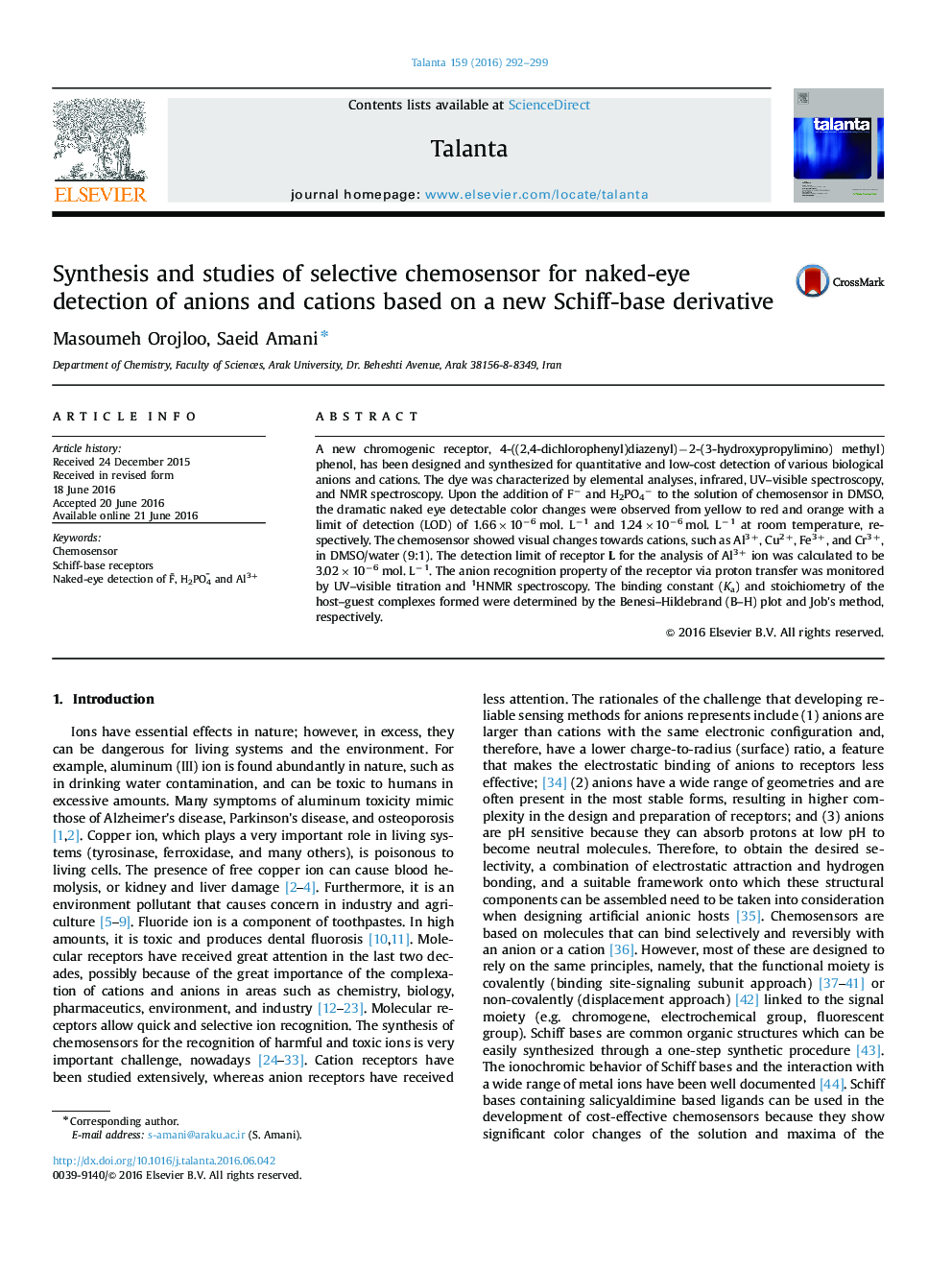| Article ID | Journal | Published Year | Pages | File Type |
|---|---|---|---|---|
| 1241778 | Talanta | 2016 | 8 Pages |
•A new receptor was designed for detection of anions and cations.•A sensor for detection of F−, H2PO4− and aluminium (III) ions.•The receptor is highly selective for F− based on the interaction of F− and OH groups of the receptor.•Solution of the receptor is coloured in DMSO and colourless when an aluminium (III) is added.•The binding constant (Ka) and stoichiometry of the host–guest complexes were determined.
A new chromogenic receptor, 4-((2,4-dichlorophenyl)diazenyl)−2-(3-hydroxypropylimino) methyl)phenol, has been designed and synthesized for quantitative and low-cost detection of various biological anions and cations. The dye was characterized by elemental analyses, infrared, UV–visible spectroscopy, and NMR spectroscopy. Upon the addition of F− and H2PO4− to the solution of chemosensor in DMSO, the dramatic naked eye detectable color changes were observed from yellow to red and orange with a limit of detection (LOD) of 1.66×10−6 mol. L−1 and 1.24×10−6 mol. L−1 at room temperature, respectively. The chemosensor showed visual changes towards cations, such as Al3+, Cu2+, Fe3+, and Cr3+, in DMSO/water (9:1). The detection limit of receptor L for the analysis of Al3+ ion was calculated to be 3.02×10−6 mol. L−1. The anion recognition property of the receptor via proton transfer was monitored by UV–visible titration and 1HNMR spectroscopy. The binding constant (Ka) and stoichiometry of the host–guest complexes formed were determined by the Benesi–Hildebrand (B–H) plot and Job's method, respectively.
Graphical abstractReceptor (L) proved to be a colorimetric fluoride (F−), di-hydrogen phosphate (H2PO4− ) and aluminum (III) sensor. This new chromogenic receptor shows a selective coloration for the above ions. The sensor showed a color change upon addition of fluoride or di-hydrogen phosphate or aluminum(III) ions.Figure optionsDownload full-size imageDownload as PowerPoint slide
